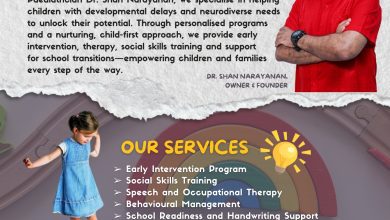Eye Health
Ipoh Echo’s EYE HEALTH series continues with Consultant Eye Surgeon Dr S.S. GILL talking to us about the Lazy Eye or Amblyopia.
The term lazy eye is frequently misused by the layman. A lazy eye, also called amblyopia is a condition that results in poor vision in an eye that did not develop normal vision in childhood.
To start with, the lazy eye does not focus on images clearly. These blur images are then sent to the vision centre in the brain and over time the brain gets used to seeing these blurr images from the lazy eye. Once this happens, the brain slowly ignores the blur images from the lazy eye, preferring the clearer images from the normally developing eye instead. Finally the visual pathways and the vision centre of the brain become fully mature in this blurr state of vision.
Amblyopia occurs in 2-4% of the population. In rare instances, it may also affect both eyes together. Once the brain development for vision is complete around the age of 8-9 years, it may mean a lifetime of poor vision in this lazy eye because the visual pathway is completed.
WHAT CAUSES LAZY EYE?
Refractive errors:
These include short sightedness (myopia), long sightedness (hypermetropia) and astigmatism. A child may be short sighted in one eye and long sighted in the other resulting in a condition called anisometropia where there is a difference created between the two eyes. The brain then gets confused with the two differing images and eventually chooses to ignore signals coming from one eye, hence the ‘lazy eye’. So treating the refractive error is important the moment it is detected.
Squints or Strabismus:
A squint is when the eye alignment is not equal and does not look in the same direction. Therefore the eyes focus on different things at the same time. In this condition, the brain will ignore images from one eye in order to prevent double vision (diplopia).
Conditions blocking vision:
Any condition that prevents proper vision in an eye because it blocks light from entering in may cause eventual lazy eye. These conditions include cataracts, tumours in the eye or even droopy eyelids.
HOW IS AMBLYOPIA DETECTED?
Parents can begin by observing their children’s vision and to bring them for a basic vision test during their pre-school years. This is good because it picks up lazy eyes at a treatable age in the child’s life. A lazy eye may sound harmless but it has long term implications on the kinds of jobs that can be performed later in the adult years. So parents, look out for those lazy eyes!


